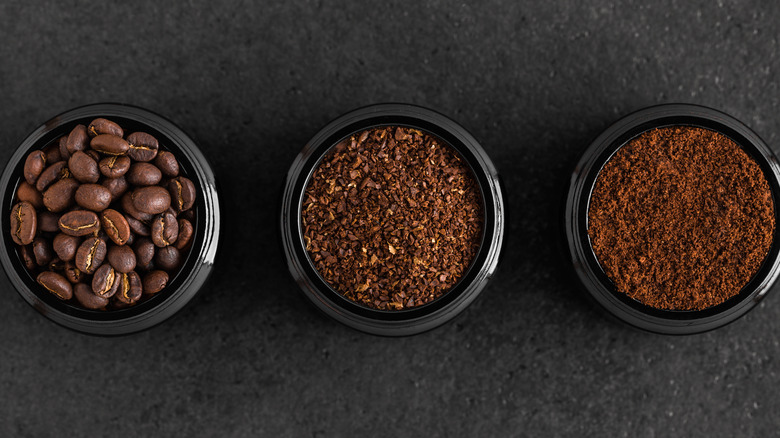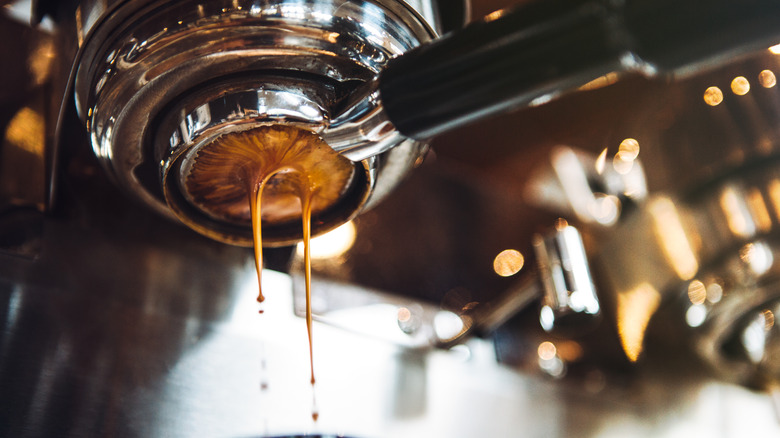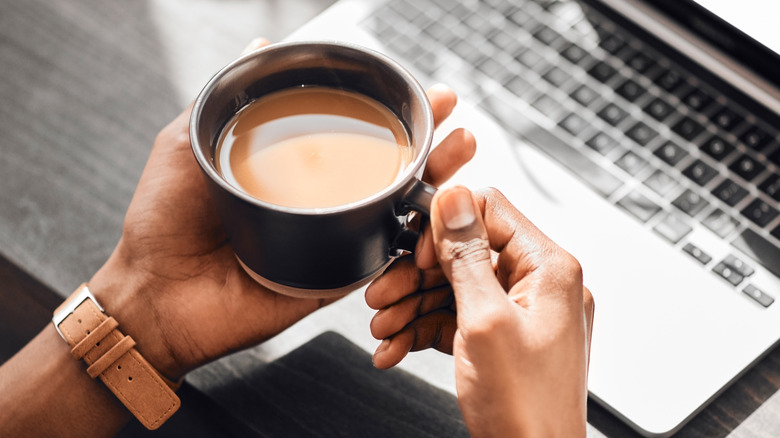How To Find The Best Grinder Setting For Your Coffee
In the days of hybrid offices and remote work, one of the best treats of the morning — or afternoon — is a well-made cup of coffee in the comfort of your own home. So many modern drinkers take pride in their java's origins, as well as creamer selection and brewing process, in order to create a drink as good as a café. But if your hot beverage isn't brewing the way you hoped, you may need to adjust the grind of your beans to get the quality you desire.
It's really important to check that your grounds match your method (especially if you have new equipment). A good rule of thumb is to opt for a coarse ground for slower methods and a fine grind for faster equipment.
For example, overnight cold brew and a leisurely French press are best made with larger, chunky grounds. Espresso and Turkish coffee work well with a pulverized measure of beans. Drip falls right in the middle, thriving with a medium grind. This ensures the water has time to extract all those wonderful flavors, but doesn't over steep and make the drink bitter.
How brew time impacts the type of coffee grounds
The reason finely ground coffee performs best in fast machines is the grounds have more surface area for water to permeate and pull from. For example, as the hot liquid races through a pile of powdery espresso, it has just seconds to permeate your roast before moving on. In brewing methods where the two ingredients have a long time to get to know each other, such as coarser K-pods, this slows down the extraction process. On the other hand, trusty drip machines, trendy pour overs, and the science experiment-like siphon brewers require beans in the nebulous medium grind range.
To determine the best approach for your equipment, experts recommend a simple trick: take a sip. If the beverage is too bitter, you may need larger ground particles, whereas sour flavors can indicate the opposite: the water isn't getting enough time to permeate.
If you're not attached to your sleep schedule, you can even make and sample multiple cups using slightly different grinds to get your method down — using the same technique and water temperature each time. Otherwise, try talking with your local baristas and describing your caffeine routine. They can likely offer a helpful starting point and even grind your next bag as you find your footing.
Additional tips for a great cup of coffee
Everyone has their own preferences when it comes to roasts and brands, but be sure to not overlook the other components in coffee. Namely, tap water, which can have unwanted minerals or hints of chlorine depending on where you live. In this case, you may want to take the time to filter your water for the best possible taste before making your coffee. And don't forget to visit the fruit aisle to help scour your coffee pot, as lemon juice will remove hard water residue.
As with spices and teas, the quality and freshness of the beans make a difference in the flavor, too. Grinding your java at home ensures you're getting maximum flavor and quality, but a pre-ground bag may be more efficient for your morning.
If you are curious about taking matters into your own hands, you'll find manufacturers offer two main types of machines: burr and blade grinders. Burr grinders take more effort to use but offer more consistency, whereas blade machines offer speed and convenience.
Regardless of which approach you take to blitzing beans, make sure to carefully clean the equipment to remove old oils and particles every few weeks. And remember that the machine's blades will dull over time, so adjust to get the best grinder setting for every cup of coffee.



